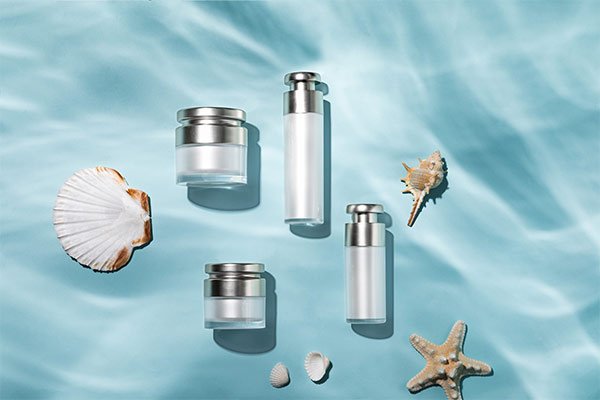As consumers become increasingly concerned about the safety and stability of cosmetic products, brands and manufacturers are paying more attention to functionality and innovation in packaging design. Packaging today must not only look appealing but also offer safety and protection. In recent years, antibacterial packaging materials have emerged as a hot trend in the cosmetics industry. By incorporating antibacterial agents into packaging materials, manufacturers can effectively inhibit microbial growth, significantly extend product shelf life, and improve hygiene throughout the product’s use cycle.
Why Are Cosmetics Prone to Contamination?
Cosmetics—especially skincare products like creams, serums, and lotions—contain abundant water, oils, and natural active ingredients. While these elements nourish the skin, they also provide an ideal breeding ground for microorganisms such as bacteria, molds, and yeasts. The risk of contamination increases significantly after opening the product, due to repeated exposure to air, fingers, or applicators.
Although most cosmetics contain preservatives like phenoxyethanol or parabens, growing consumer demand for “natural,” “hypoallergenic,” and “preservative-free” formulations is pushing brands to reduce preservative usage. This has created an opportunity for antibacterial packaging materials to serve as a milder and safer protective alternative.
Types of Antibacterial Agents and Their Mechanisms
Antibacterial agents used in packaging materials generally fall into three categories:
1. Inorganic Antibacterial Agents
Common examples include silver ions, zinc ions, and copper ions, which offer broad-spectrum antibacterial performance. These metal ions disrupt bacterial cell walls, protein structures, or DNA synthesis, effectively inhibiting or killing bacteria. Silver-based agents are especially popular due to their high thermal stability and compatibility with manufacturing processes such as injection molding, blow molding, and heat sealing.
2. Organic Antibacterial Agents
These include quaternary ammonium compounds, potassium sorbate, and triclosan. They are effective at low concentrations and are suitable for packaging materials requiring high antimicrobial protection. However, they may suffer from migration issues or limited light stability, so careful material design is necessary.
3. Natural Antibacterial Agents
Derived from natural sources like chitosan, tea polyphenols, citrus extracts, and clove oil, these agents offer excellent biocompatibility and antimicrobial activity. They are ideal for brands focusing on clean beauty or natural skincare. However, their thermal stability is generally lower, and processing is more complex, limiting their widespread industrial use.
Application Methods of Antibacterial Packaging
Antibacterial agents can be incorporated into packaging materials using several techniques:
- Blending Modification: Mixing antibacterial agents directly into plastic resins (e.g., PP, PE, PET) during production.
- Surface Coating: Spraying or dipping the surface of the packaging with antibacterial solutions—suitable for films and bottle caps.
- Multilayer Structures: Embedding antibacterial layers within multi-layer packaging to create targeted protection zones.
- Nano-Encapsulation: Embedding antibacterial components in nanocapsules to allow for slow release and prolonged antibacterial action.
These techniques help ensure both functionality and stability of the antibacterial properties throughout the product’s lifecycle.
Testing Methods and Standards for Antibacterial Packaging Materials
To ensure the effectiveness and safety of antibacterial packaging, scientific and standardized testing is essential. Both international and national standards have been established for evaluating antibacterial performance and safety.
1. Antibacterial Performance Testing
The most widely used test methods include:
- JIS Z 2801 (Japanese Industrial Standard)
This method measures bacterial reduction on the material surface after 24 hours of contact. The result is expressed as the “antibacterial activity value (R),” with R ≥ 2 indicating effective antibacterial performance. - ISO 22196 (International Standard)
Equivalent to JIS Z 2801, it is widely applied to plastics, medical packaging, and consumer products. The method typically targets common pathogens such as Escherichia coli and Staphylococcus aureus. see more about ISO 22196 - GB/T 21866 (China National Standard)
This is the Chinese adoption of ISO 22196 and is widely used for antibacterial performance evaluation in polymer-based materials.
2. Antifungal (Anti-Mildew) Testing
To evaluate packaging materials exposed to long-term storage, antifungal resistance is also tested:
- ASTM G21 (American Society for Testing and Materials)
Used to assess resistance of plastic materials to fungal growth in humid environments over a period of 28 days. - GB/T 24346 (China National Standard)
Evaluates fungal resistance of plastic products under controlled conditions, suitable for packaging stored in damp or warm environments.
3. Migration Testing for Antibacterial Agents
It is crucial to determine whether antibacterial agents may migrate into the cosmetic formulation. Migration testing ensures safety and regulatory compliance:
- EU Regulation 10/2011: Provides migration limits for additives used in food-contact materials, often referenced for cosmetic packaging safety as well.
- GB 31604 Series (China Food Safety National Standards): While primarily designed for food packaging, these standards are also relevant for evaluating the migration behavior of antibacterial agents in cosmetic containers under different temperature and humidity conditions.
Three Major Advantages of Antibacterial Packaging
1. Extended Shelf Life
By reducing the need for preservatives, antibacterial packaging provides additional microbial protection, which can significantly extend both shelf and usage life of cosmetics.
2. Improved Hygiene During Use
Frequent opening and contact during application introduce contamination risks. Antibacterial packaging helps inhibit microbial growth, which is especially important for products applied near sensitive areas such as eyes or lips.
3. Enhanced Brand Trust and Market Value
“Antibacterial packaging” can be positioned as a high-tech feature that communicates brand commitment to product safety. It offers added value, especially in baby skincare, sensitive skin, or preservative-free product lines.
Conclusion
Antibacterial packaging materials represent a significant advancement in cosmetic packaging technology. By carefully selecting and applying appropriate antibacterial agents—and validating their effectiveness through standardized testing—brands can reduce preservative usage, extend product shelf life, and deliver safer, more pleasant user experiences.
In today’s competitive cosmetics market, attention to such packaging details is not just an option—it’s a strategic advantage that helps build lasting consumer trust.
If you’re looking for customized antibacterial packaging solutions or need support with testing reports and compliance certifications, feel free to contact our expert team.


-300x210.jpg)
